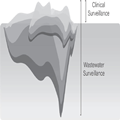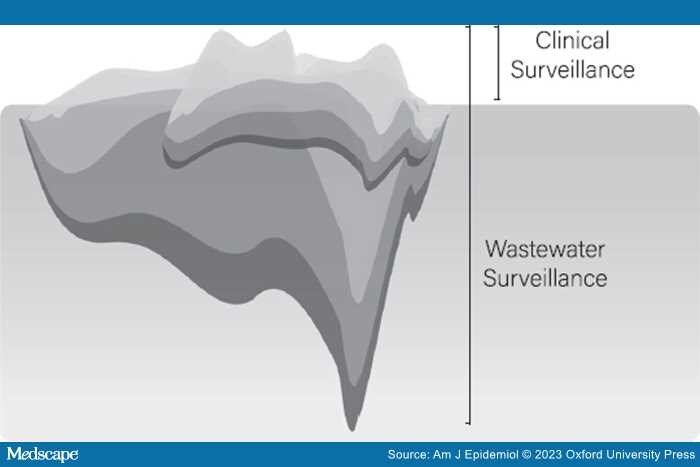Abstract and Introduction
Abstract
Wastewater surveillance for severe acute respiratory syndrome coronavirus 2 (SARS-CoV-2) has been shown to be a valuable source of information regarding SARS-CoV-2 transmission and coronavirus disease 2019 (COVID-19) cases. Although the method has been used for several decades to track other infectious diseases, there has not been a comprehensive review outlining all of the pathogens that have been surveilled through wastewater. Herein we identify the infectious diseases that have been previously studied via wastewater surveillance prior to the COVID-19 pandemic. Infectious diseases and pathogens were identified in 100 studies of wastewater surveillance across 38 countries, as were themes of how wastewater surveillance and other measures of disease transmission were linked. Twenty-five separate pathogen families were identified in the included studies, with the majority of studies examining pathogens from the family Picornaviridae, including polio and nonpolio enteroviruses. Most studies of wastewater surveillance did not link what was found in the wastewater to other measures of disease transmission. Among those studies that did, the value reported varied by study. Wastewater surveillance should be considered as a potential public health tool for many infectious diseases. Wastewater surveillance studies can be improved by incorporating other measures of disease transmission at the population-level including disease incidence and hospitalizations.
Introduction
Infectious disease surveillance is most commonly conducted at the health center or the hospital,[1] either through passive reporting or active case identification.[2] This type of clinical surveillance requires events, where the event of a case, hospitalization, or death occurring allows for estimations in trends in morbidity and mortality (Figure 1). In this way, the number of cases, hospitalizations, and deaths from endemic infectious diseases such as malaria or influenza are tracked, and the effectiveness of interventions such as mosquito control or vaccines can be monitored. Importantly, due to cost and unequal access to clinical health-care diagnostic tools, many pathogens under surveillance are characterized by their symptoms or syndromes, such as influenza-like illness. For emerging pathogens, event-based infectious disease surveillance may note an unexpected increase in some symptom or condition, notably as occurred with microcephaly and Zika,[3,4] or observed pneumonia cases without a known cause, as occurred with coronavirus disease 2019 (COVID-19).[5] Event-based infectious disease surveillance requires a health system capable of observing trends, a population with sufficient access to that health system, and a sufficiently large trend or cluster of odd cases to alert officials. Importantly, event-based surveillance misses any infectious disease transmission that is not captured by cases, hospitalizations, and deaths (Figure 1).
Figure 1.
Infectious disease transmission in a population is often viewed as an iceberg. Only a fraction of infectious disease transmission is ever visible, as cases, hospitalizations, and deaths arise and are counted. Clinical surveillance captures this fraction of visible infectious disease transmission. Wastewater surveillance captures visible as well as "invisible" information on infectious disease transmission, including infections that do not result in cases, hospitalizations, or deaths. Infections may be "invisible" for a variety of reasons, including a lack of symptoms, individuals not seeking a diagnostic test or treatment, lack of access to a diagnostic test or treatment, or even clinical systems unable or unwilling to report cases.
Environmental surveillance, on the other hand, is a broad category for systems that monitor the potential risk of a pathogen by identifying and perhaps quantifying that pathogen in the environment. Their defining characteristic is the circumvention of human behavior and health systems, which reduces bias, while still providing information regarding risks to human health. For example, environmental surveillance may routinely test known vectors for pathogens,[6] alerting the public to the detection of, or an increase in, the pathogen in the vector population.
Wastewater surveillance is a type of environmental surveillance that has historically been utilized to track pathogens transmitted by waterborne or fecal-oral routes. The origins of wastewater surveillance go back to the London cholera epidemic of the mid-1800s, in which John Snow identified a cesspool near a house with multiple cholera deaths; when it was excavated, it was found to be leaking into the pump's water supply.[7] With the scientific evidence supporting germ theory at the time, scientists began hunting sewage not only for cholera but also for other pathogens, including Salmonella typhi bacteria (typhoid),[8,9] Coxsackie viruses,[10] and poliovirus.[11] From the 1970s onward, wastewater surveillance formed a critical component of the worldwide initiative to eradicate polio,[12] and perhaps polio provides the best contrast between event-based and environmental surveillance systems. Whereas event-based polio surveillance relies on an unexpected increase in acute flaccid paralysis, which occurs in only 0.5% of polio cases,[13] wastewater surveillance can detect poliovirus circulating in a community prior to widespread transmission.[14]
In general, wastewater surveillance provides an indicator of infectious disease transmission independent of treatment-seeking behavior or access to care. It is most easily implemented at a wastewater treatment plant, which provides a representative sample for all individuals connected to a sewer network. The approach can also be implemented upstream from a wastewater treatment plant or even in communities without a wastewater treatment plant, as long as sewage from multiple individuals gathers at a centralized point. (Septic tanks, latrines, and lack of sanitation access present challenges to wastewater surveillance systems.) By circumventing the need for a diagnostic test, wastewater surveillance better captures the spectrum in infectious diseases, including asymptomatic infections and cases that may not seek treatment (Figure 1). Care and expertise are needed to interpret the results from wastewater surveillance, as fecal or urinary shedding rates and timing of different pathogens varies. Indeed, perhaps the greatest degree of research advance that is needed is in relating what is found in wastewater surveillance back to public health understanding and action.
The COVID-19 pandemic saw the broad adaptation of wastewater surveillance across the globe,[15] as the limitations of event-based surveillance systems for an emergingpathogen were laid bare. Most interestingly, COVID-19 is a respiratory-transmitted pathogen, suggesting that a pathogen's mode of transmission need not be fecal-oral or waterborne for wastewater surveillance to be useful. Recent reviews of wastewater detection focusing on COVID-19 have elaborated on the importance of this method for detecting viruses with specific focus on pathogens transmitted via the fecal-oral route despite COVID-19 being a respiratory virus.[16] This focus suggests a potential gap in knowledge for wastewater-based epidemiology, where the assumed scope of pathogens for this method may be limited by researchers' perception that the pathogen must be transmitted through the fecal-oral or waterborne routes. Other reviews have also focused exclusively on viruses, ignoring the potential for detecting bacteria in wastewater to inform public health action.[17] This leads to the key questions we seek to answer: 1) What infectious diseases have been detected in wastewater, and can public health systems incorporate their detection as they build capacity in wastewater surveillance? 2) What insights for public health can be drawn from the types of pathogens that have been detected in wastewater? Herein we present a systematic review of wastewater surveillance for infectious diseases other than COVID-19, reporting the documented successes of testing wastewater for infectious disease pathogens that circulate primarily in humans.
Am J Epidemiol. 2023;192(2):305-322. © 2023 Oxford University Press







